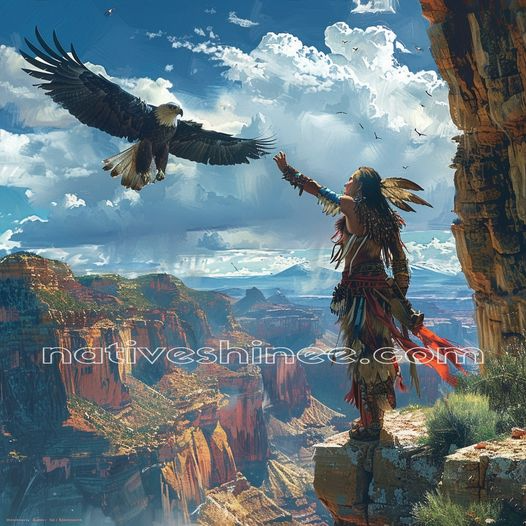Historical Context of Native American Life Before Horses
1. Traditional Means of Transportation and Hunting
Before the introduction of horses, Native Americans relied on foot travel and dogs for transportation. The lack of large domesticated animals made long-distance travel and the transportation of goods challenging. Hunting techniques were adapted to the environment, with methods such as running buffalo off cliffs or using intricate trapping techniques for smaller game.
2. Early Warfare Tactics and Strategies
Warfare among Native American tribes before the arrival of horses involved ambushes, stealth, and hand-to-hand combat. Strategies were heavily dependent on the terrain and the element of surprise. Battles were typically fought on foot, which limited the range and speed of engagements.
Introduction of Horses to Native Americans
1. Arrival of Horses in North America
Horses were reintroduced to North America by Spanish explorers in the early 16th century. These animals quickly spread through trade and raids, reaching various Native American tribes. The rapid proliferation of horses across the continent marked the beginning of a profound transformation in Native American life.
2. Initial Interaction Between Native Americans and Horses
The initial encounters with horses sparked curiosity and adaptation. Native Americans recognized the potential of horses for enhancing mobility, hunting, and warfare. Tribes began capturing and taming wild horses, gradually integrating them into their culture and daily activities.
The Impact of Horses on Native American Culture
1. Horses as a Status Symbol
Horses quickly became a symbol of wealth, status, and power within Native American tribes. Owning a large number of horses elevated a person's standing in the community. Chiefs and warriors were often judged by the quality and quantity of their horse herds.
2. Changes in Daily Life and Mobility
The introduction of horses revolutionized daily life for Native Americans. Travel became faster and more efficient, allowing tribes to cover greater distances for trade, hunting, and migration. Horses also enabled the transport of heavier loads, improving the overall quality of life.
3. Influence on Trade and Economy
Horses enhanced the efficiency of trade, allowing for the transportation of goods over longer distances. This facilitated greater economic exchange between tribes and with European settlers. The increased mobility also expanded hunting grounds, contributing to a more robust economy based on buffalo and other game.
Transformation in Warfare Tactics and Strategies
1. Enhanced Mobility and Speed in Battle
Horses transformed Native American warfare by providing unprecedented mobility and speed. Mounted warriors could execute rapid attacks and retreats, making them formidable opponents. This newfound agility allowed tribes to protect their territories more effectively and engage in large-scale raids.
2. Development of Mounted Combat Techniques
The adoption of horses led to the development of specialized mounted combat techniques. Warriors became skilled at shooting arrows and wielding weapons from horseback, combining speed with lethal precision. These tactics gave Native American warriors a significant advantage in battle.
3. Psychological Impact on Opponents
The sight of mounted Native American warriors was intimidating to their enemies. The speed and agility of horse-mounted fighters created psychological pressure, often leading to the quick demoralization and defeat of their adversaries.
Tribes Renowned for Their Horsemanship
1. The Comanche: Masters of the Plains
The Comanche tribe, known as the "Lords of the Plains," were among the most skilled horsemen. They developed a deep bond with their horses, excelling in breeding, riding, and warfare. Their dominance on horseback allowed them to control vast territories and become a powerful force on the Southern Plains.
2. The Lakota Sioux: Fearsome Warriors on Horseback
The Lakota Sioux integrated horses into their culture and warfare, becoming renowned for their bravery and skill in battle. Their ability to maneuver and fight on horseback was legendary, and they played a significant role in resisting European expansion on the Northern Plains.
3. The Nez Perce: Skilled Breeders and Riders
The Nez Perce tribe was famous for breeding the Appaloosa horse, known for its distinctive spotted coat and endurance. Their expertise in horsemanship and breeding created a legacy of exceptional riders and resilient horses, contributing to their success in hunting and warfare.
Legacy of Horses in Native American History and Culture
1. Preservation of Horsemanship Traditions
Many Native American tribes have preserved their horsemanship traditions, passing down skills and knowledge through generations. These traditions are celebrated through cultural events, such as rodeos and horse races, keeping the legacy of their ancestors alive.
2. Horses in Native American Art and Stories
Horses hold a prominent place in Native American art, folklore, and spiritual beliefs. They are depicted in various forms of art, symbolizing strength, freedom, and connection to the land. Stories and legends about horses continue to be an integral part of Native American cultural heritage.
3. Modern-Day Celebrations and Commemorations
Today, Native American communities honor their history and the role of horses through festivals, powwows, and educational programs. These events celebrate the enduring bond between Native Americans and their horses, highlighting the significance of this relationship in their cultural identity.
Conclusion
1. Summary of the Importance of Horses to Native American Warriors
The introduction of horses to Native American tribes brought about a profound transformation in their way of life. Horses became indispensable in warfare, hunting, and daily activities, reshaping Native American culture and society. The legacy of these remarkable animals endures, reflecting the resilience and adaptability of Native American warriors.
2. Encouragement to Learn More and Preserve History
Understanding the historical importance of horses to Native American warriors is crucial for appreciating their rich cultural heritage. Readers are encouraged to delve deeper into this fascinating history and support efforts to preserve and celebrate Native American traditions through visits to museums, cultural centers, and participation in community events.






















